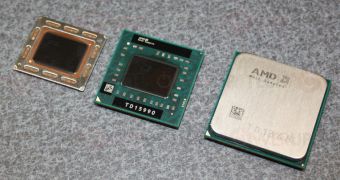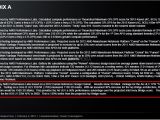AMD’s Trinity ultra-low voltage APUs, that are scheduled to be released by the company in the middle of this year in order to counter Intel’s ULV processors, are expected to provide up to 100% better graphics performance than today’s Ultrabook CPUs.
At the end of the presentation held by Lisa Su, SVP and general manager, Global Business Units at AMD, during the Financial Analyst Day, the Sunnyvale-based chip maker included a series of performance projections for its upcoming chips.
These cover the performance of its chips, as well as that of Intel’s ULV processors, in 3DMark Vantage, where testing has shown that an A6-Series Trinity APU with a 17 Watt TDP scores 2355 points.
According to AMD, this is twice as fast as a Sandy Bridge Core i5 2537M CPU (1158 3D Marks), which is one of the most popular processors to be used in today’s Ultrabooks.
Furthermore, even after taking into account the assumed 30% graphics improvement brought by Ivy Bridge, the A6 ULV accelerated processing unit is still expected to be 56% faster.
When compared with a 25W A10-Series low-voltage APU, this difference grows even bigger, as the AMD chip scores an impressive 3600 points, which represents a 139% performance increase over the projected Ivy Bridge score.
As VR-Zone has revealed, both ULV and LV Trinity APUs will feature quad processing cores and are designed to fit in ultrathins approximately 18mm thick.
The computing cores will go by the name of Piledriver and, much like the current Llano APUs, lack any sort of Level 3 cache memory, as AMD wanted to increase the die area available to the on-board GPU.
Compared to Llano, Trinity APUs will also bring support for a series of new instructions sets introduced with the Bulldozer architecture, such as AVX and AES-NI, as well as for DDR3-2133 memory. AMD’s Trinity APUs are expected to arrive in mid-2012.

 14 DAY TRIAL //
14 DAY TRIAL // 
